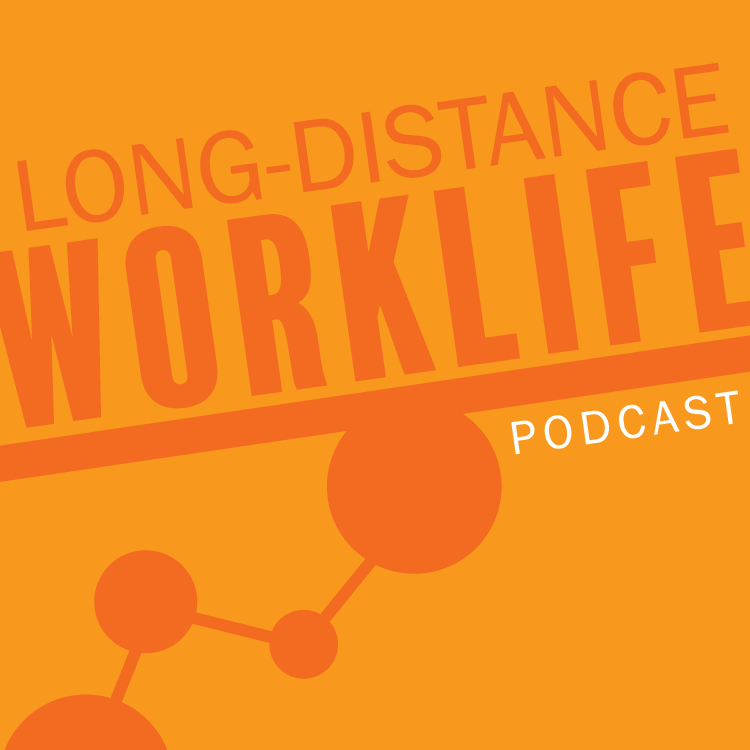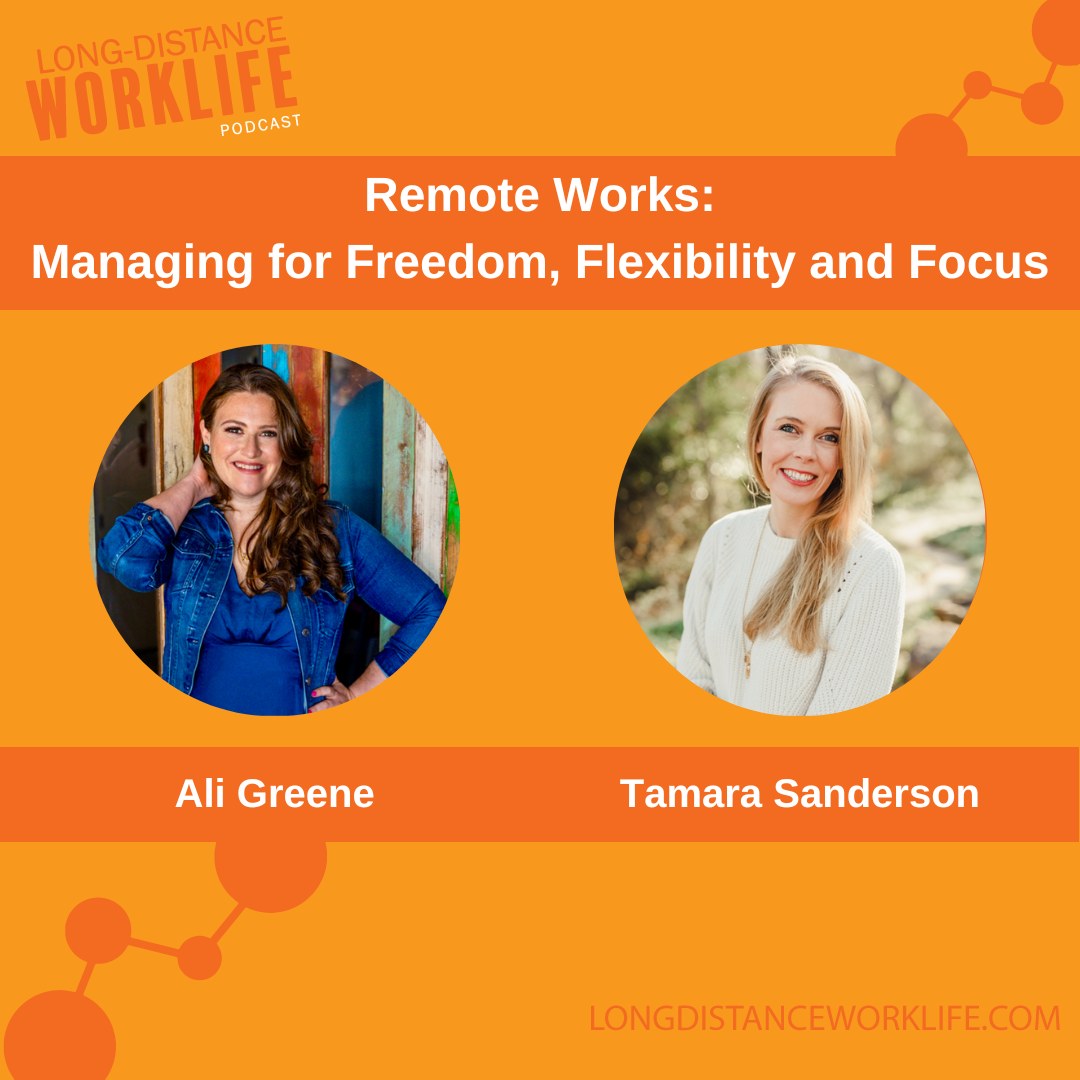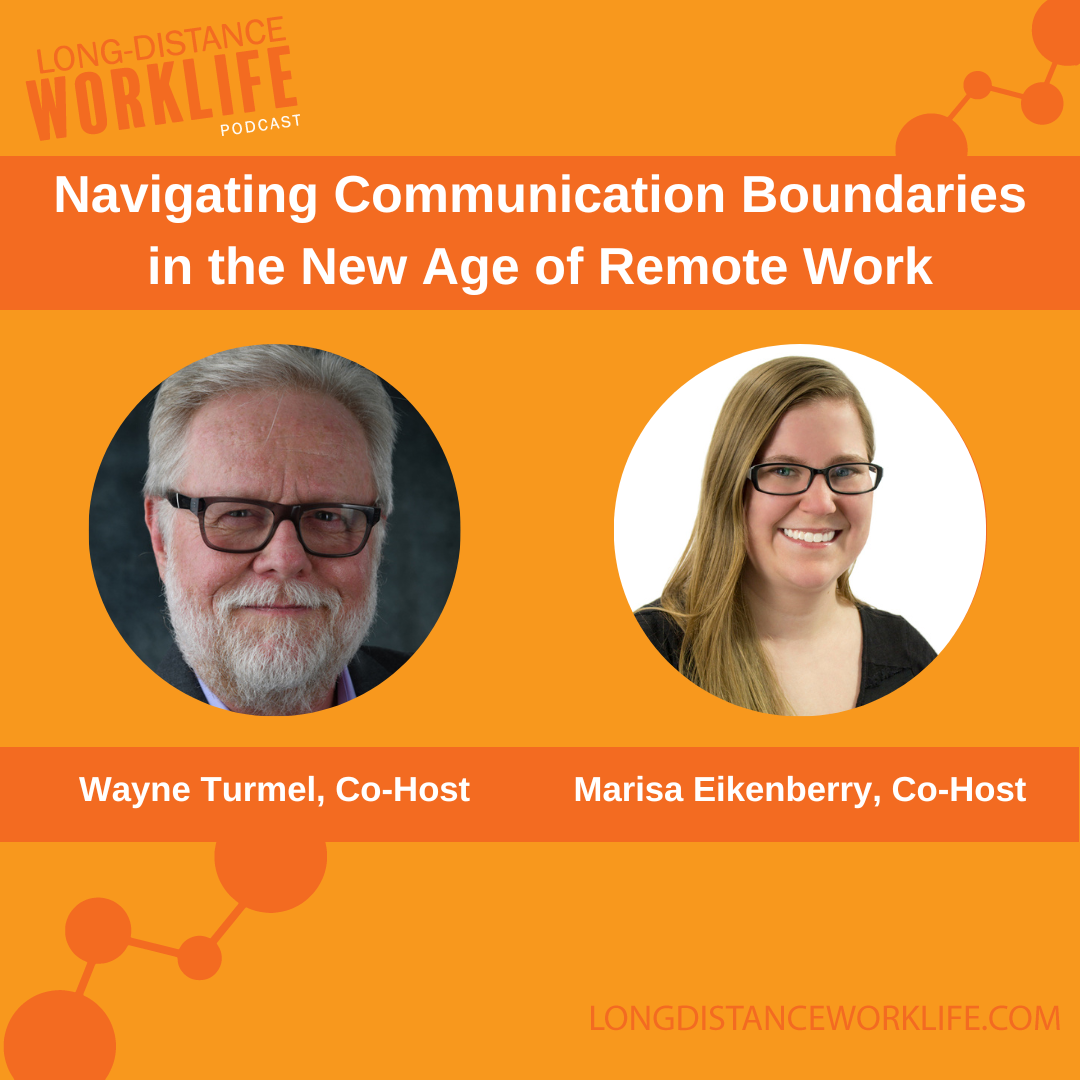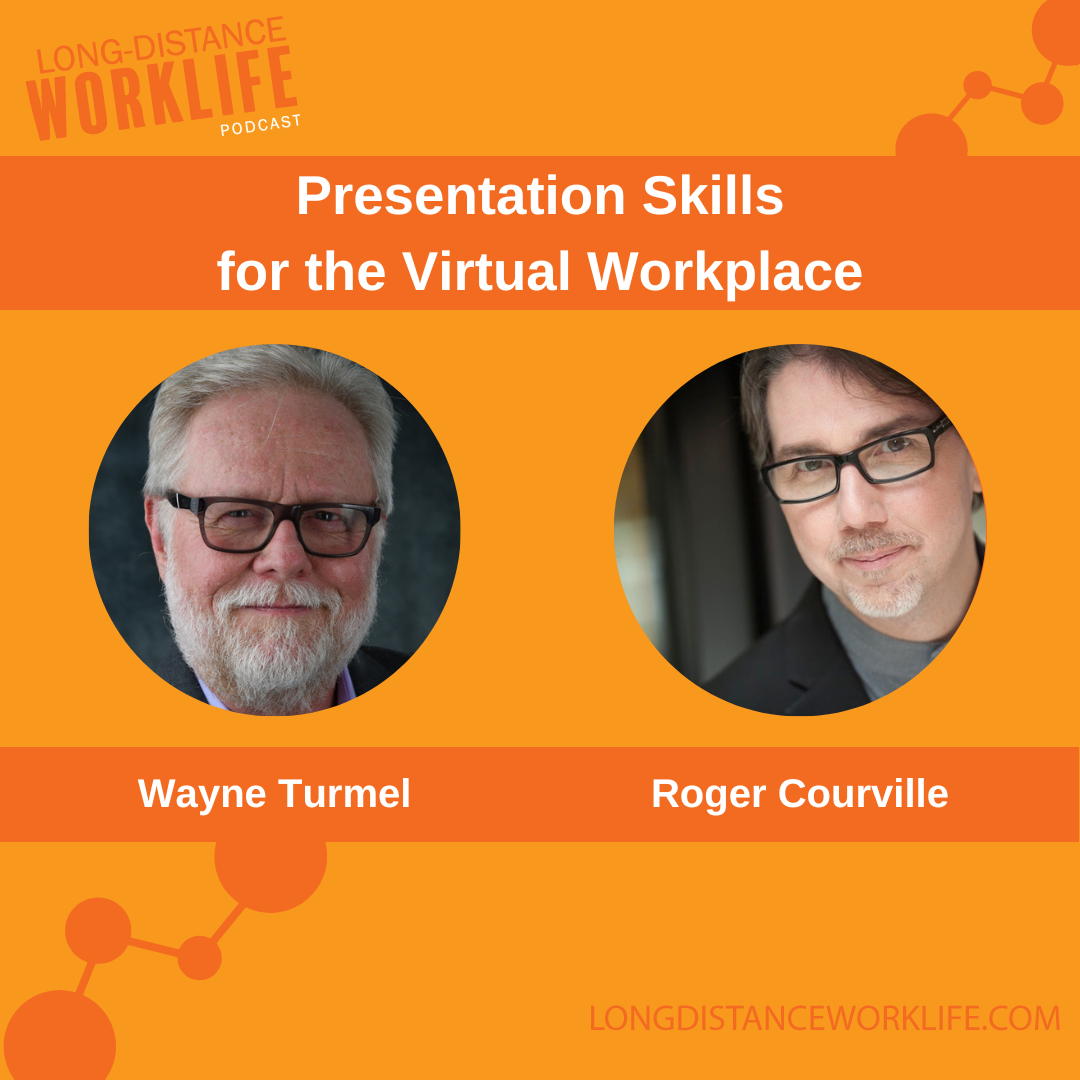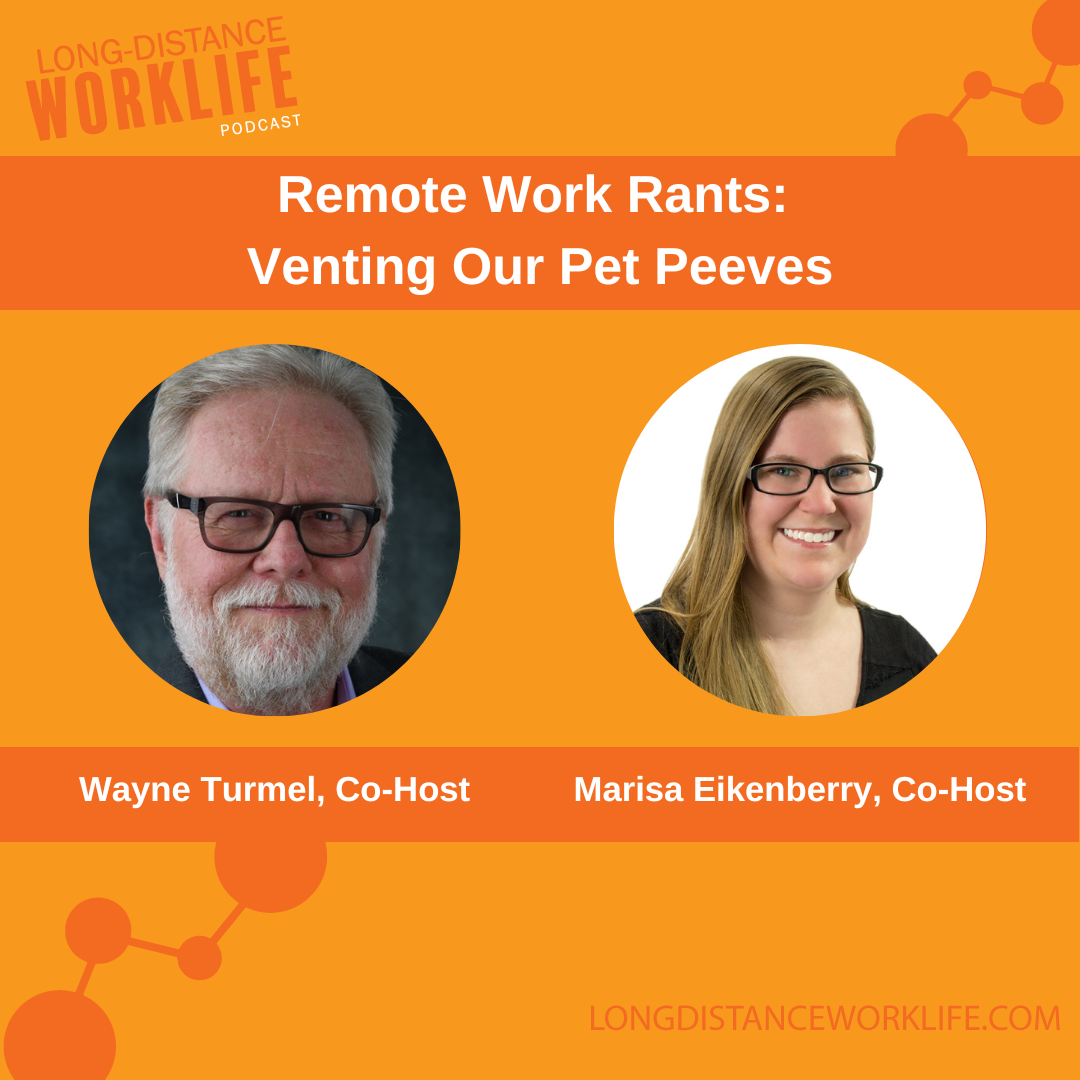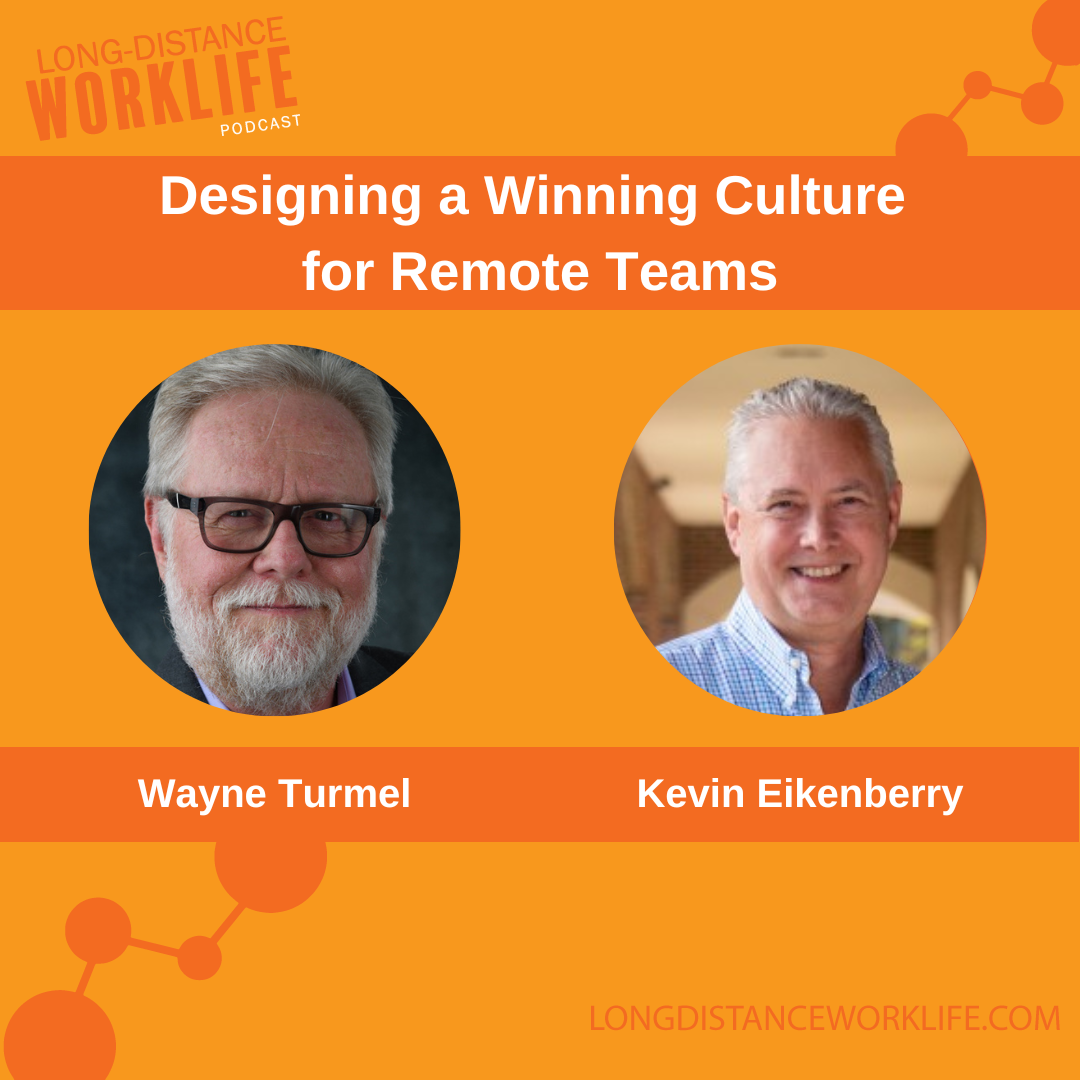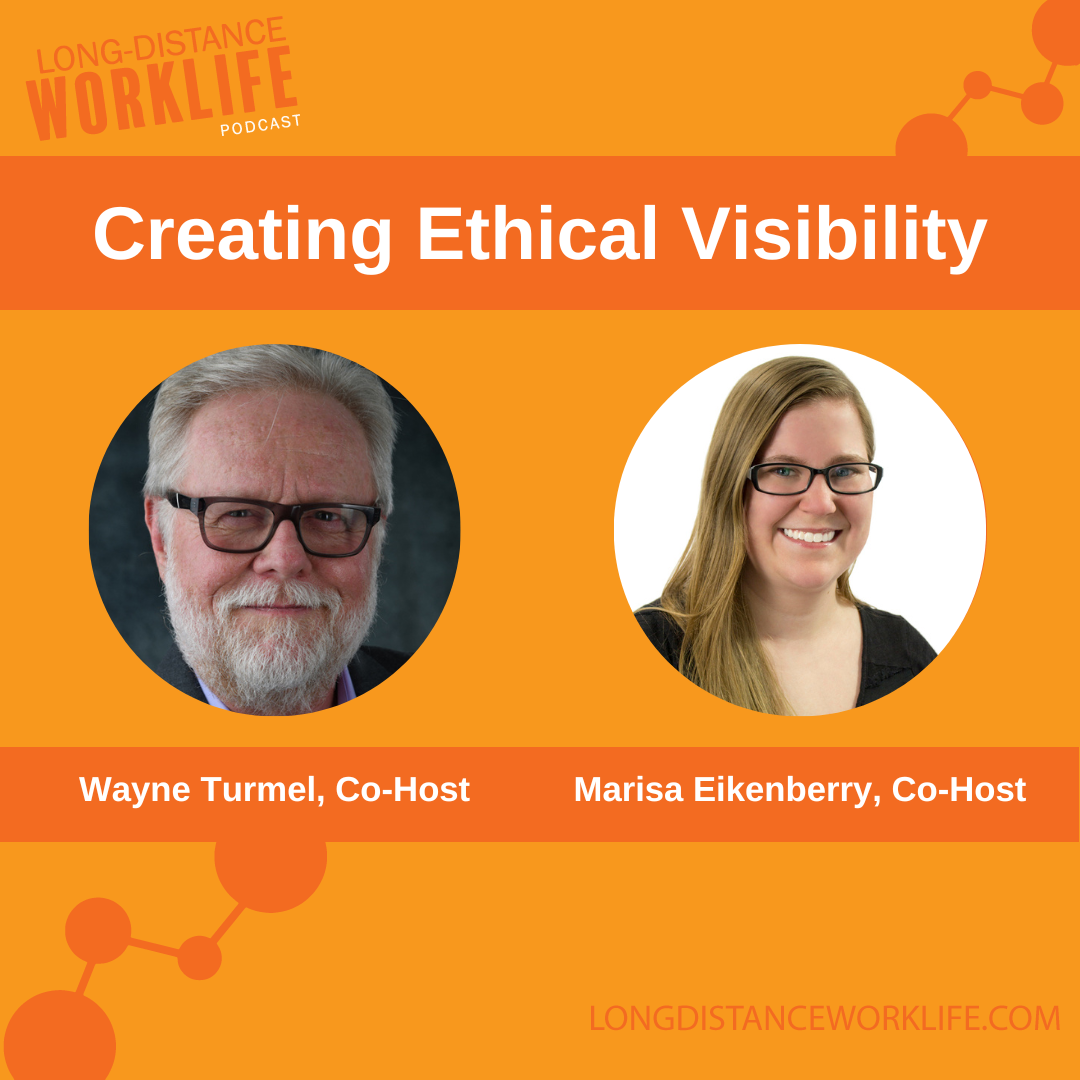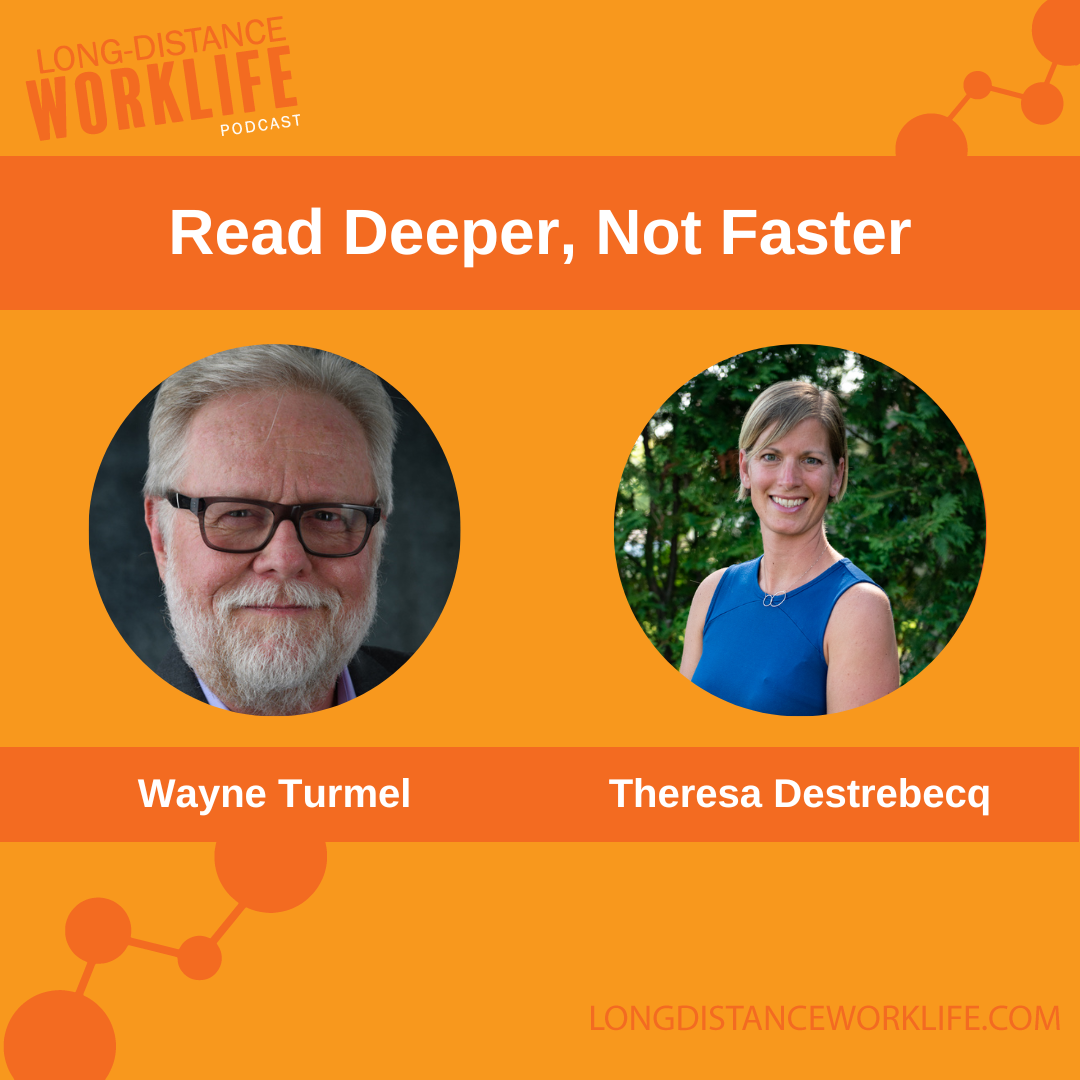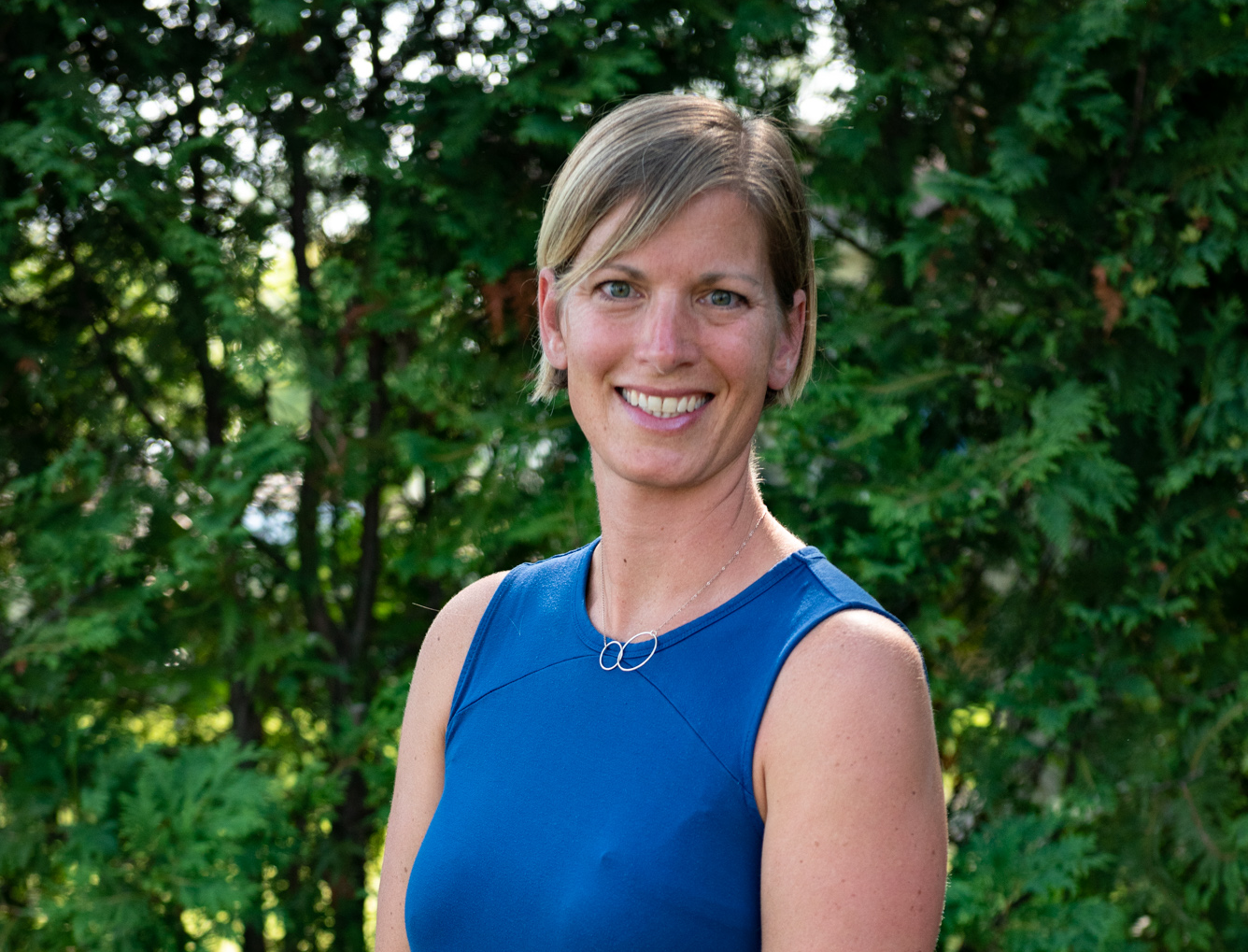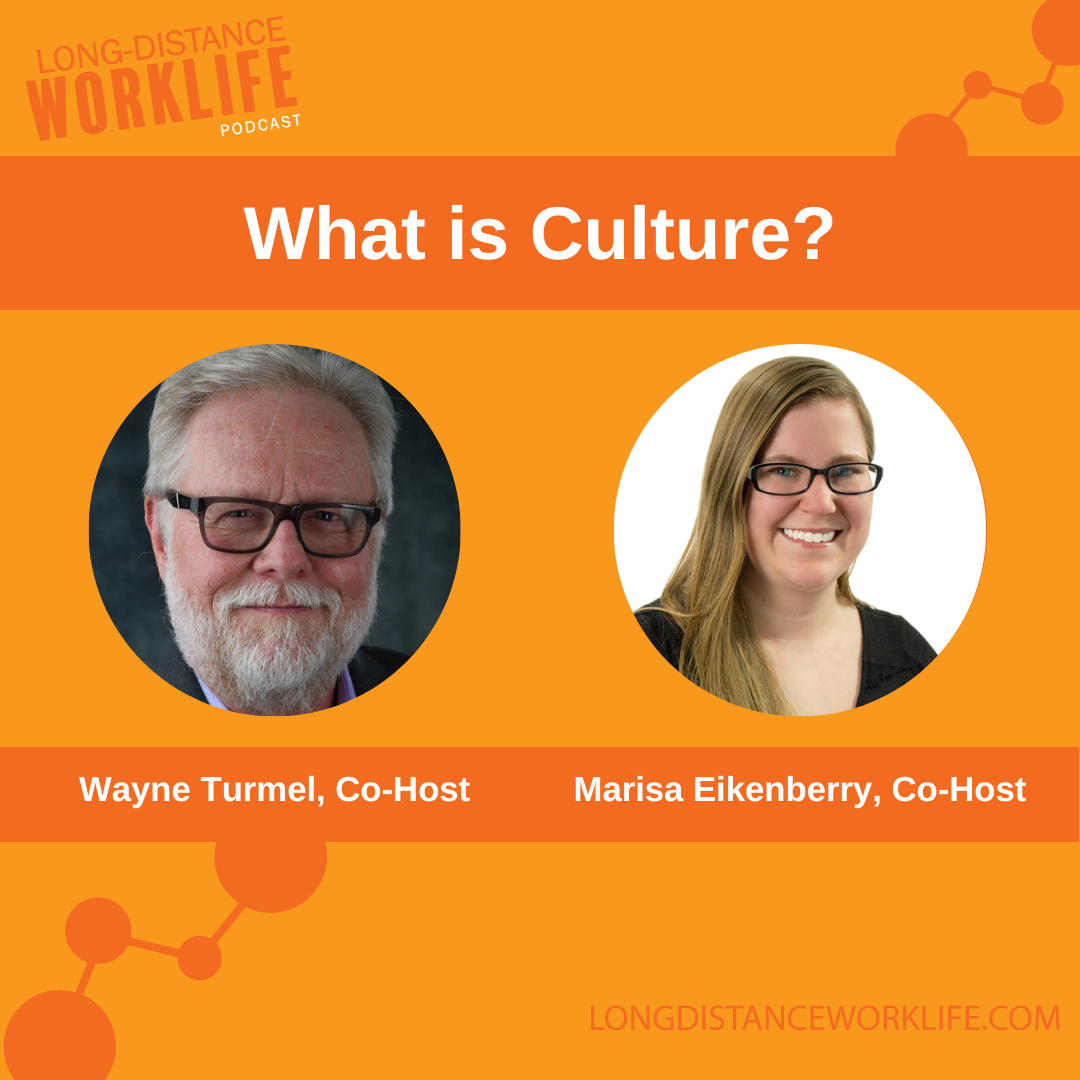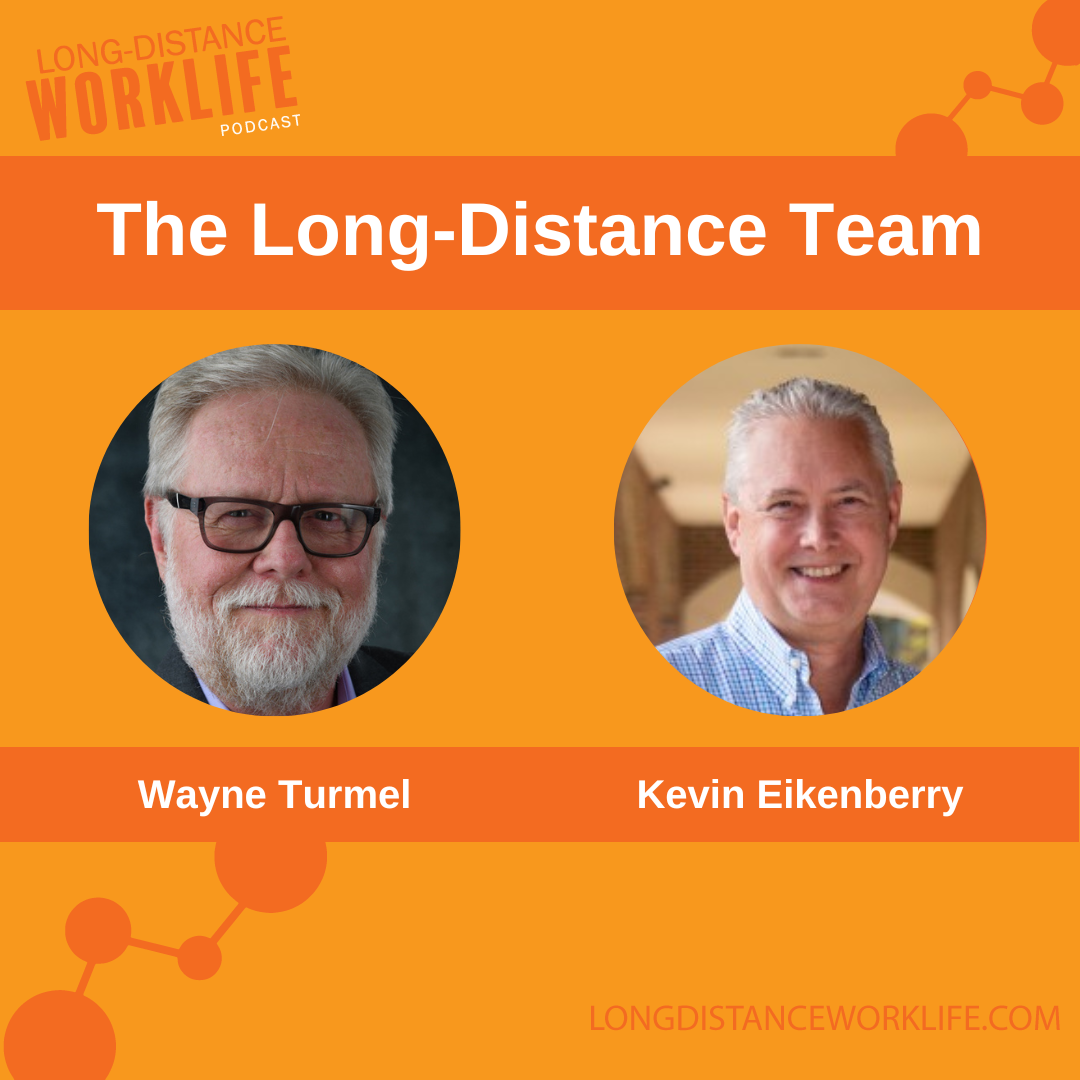Wayne Turmel joins Tamara Sanderson and Ali Greene, authors of the book Remote Works: Managing for Freedom, Flexibility and Focus, to discuss their passion for remote work and the importance of intentionality in successfully transitioning to remote work. They stress the need for companies to have non-negotiables in place, including trust-building, autonomy, and rethinking traditional management techniques. They also emphasize the need for leaders to embrace the liberation and benefits of remote work and let go of outdated practices. Ultimately, remote work must be designed to fit a company's values and decisions must be made with intentionality in order to maintain sustainability and attract talent.
Key Moments
- Remote work is not just about the surface level of technology tools like Zoom, but it requires rethinking every aspect of work to truly unlock its benefits.
- Intentionality is crucial for successful remote work, including having non-negotiables in place and designing remote work to fit a company's values.
- Trust-building, autonomy, and letting go of outdated management techniques are key to successfully transitioning to remote work.
- Remote work should be embraced as a form of liberation from the traditional office, and not simply as a temporary solution to the pandemic.
- Leaders must learn to let go and embrace the future of remote work to maintain sustainability and attract talent.
Timestamps
00:00:00 Introduction
00:02:31 Benefits of Remote Work
00:04:19 Non-negotiables for Remote Work Success
00:06:18 Letting Go and Cut & Paste Behaviors
00:12:42 Location Flexibility and Communication in a Remote Setting
00:14:03 Leaders' Role in Identifying and Helping with Burnout in Hybrid Work Environments
00:16:12 Comparing the High School and College Models of Working to Prevent Burnout
00:17:27 Remote Work Autonomy and Burnout Prevention
00:19:17 Conclusion
Quotes
"Once you really unlock the benefit of remote work, you start completely rethinking every aspect of work."
Related Episodes
Featured Guests
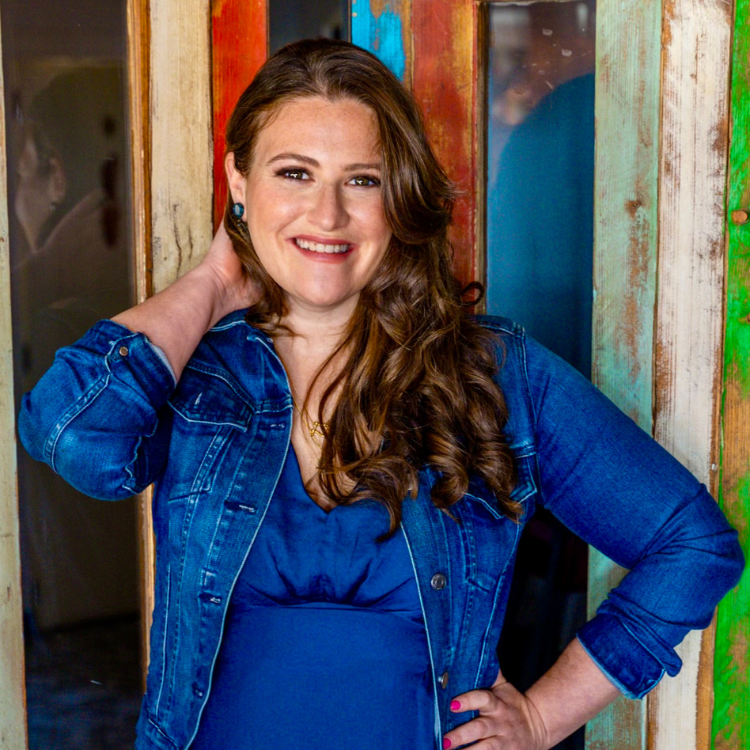
Name: Ali Greene
What She Does: Remote Work leader, advocate & speaker and co-author of Remote Works: Managing for Freedom, Flexibility, and Focus
Notable: Ali is the former director of People Operations at DuckDuckGo.

Name: Tamara Sanderson
What She Does: L&D advisor, trainer and facilitator. Co-author of Remote Works: Managing for Freedom, Flexibility, and Focus
Notable: Tamara is the former director of Strategic Partnerships and Corporate Development at Automattic.
Additional Resources
- Order Remote Works: Managing for Freedom, Flexibility, and Focus
- Learn more about Remote Works
- Connect with Ali Greene on LinkedIn
- Connect with Tamara Sanderson on LinkedIn
- Follow Remote Works on LinkedIn
- Learn more about Wayne Turmel
- Connect with Wayne Turmel on LinkedIn
- Email Wayne Turmel
- Order a copy of The Long-Distance Leader
- Order a copy of The Long-Distance Teammate
- Order a copy of The Long-Distance Team
- The Kevin Eikenberry Group
Order The Long-Distance Team
Remote leadership experts, Kevin Eikenberry and Wayne Turmel, help leaders navigate the new world of remote and hybrid teams to design the culture they desire for their teams and organizations in their new book!
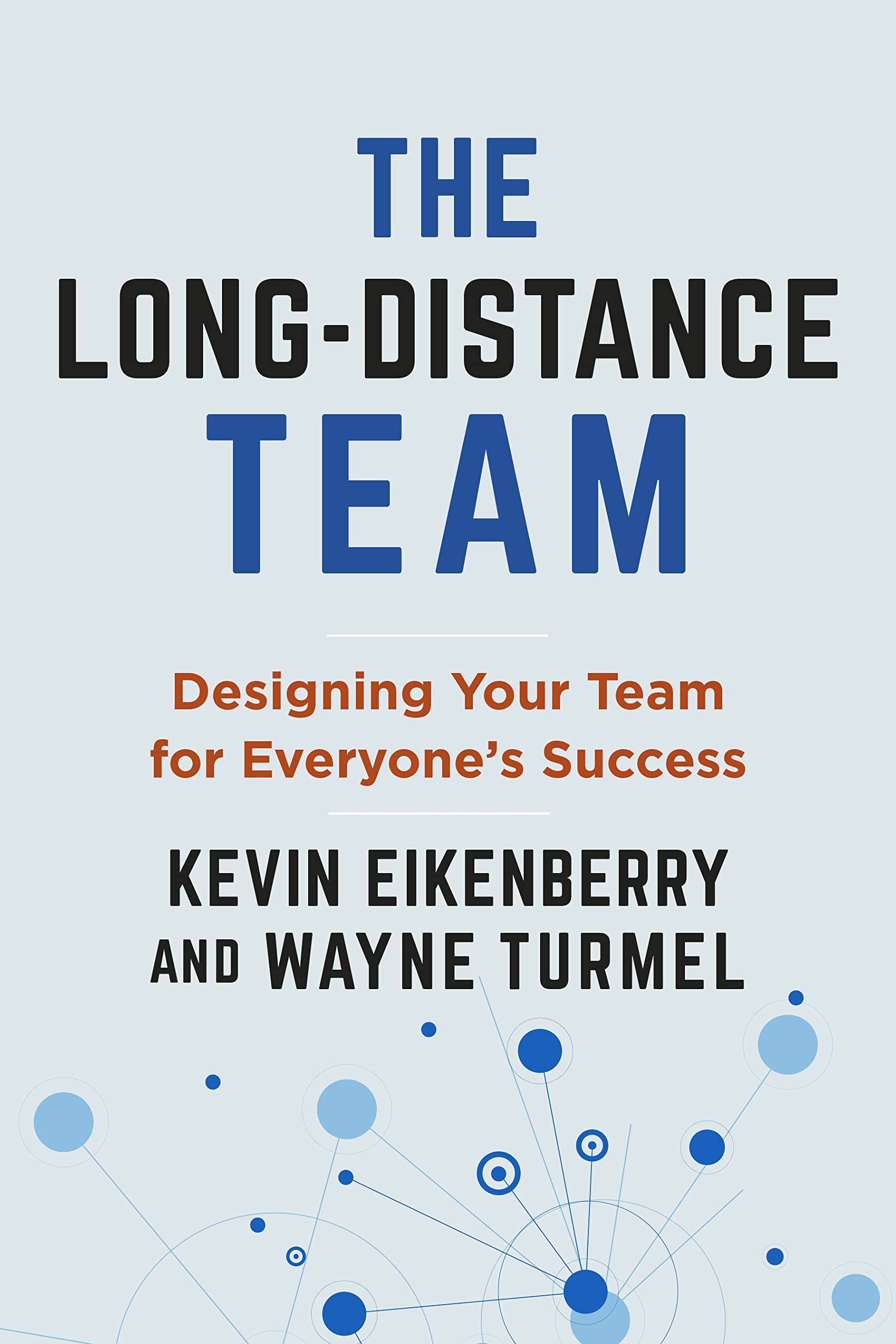
00:00:07:21 - 00:00:38:10
Wayne Turmel
Hi, everybody. Welcome to The Long-Distance Worklife podcast where we try desperately to make sense of remote and hybrid work and basically all of the ways that the workplace is changing. My name is Wayne Turmel, I am master trainer/ coach with The Kevin Eikenberry Group. My usual co-host, Marisa is not here today, which means this is one of our interview episodes and so I am very, very excited.
00:00:39:04 - 00:00:59:04
Wayne Turmel
We have a couple of guests with us, Ali Greene and Tam Sanderson, and we are going to talk about their book, Remote Works: Managing for Freedom, Flexibility and Focus. And so that is enough of staring at my face for those of you on YouTube. Ali and Tam. Hi, how are you?
00:00:59:05 - 00:01:02:10
Ali Greene
Hello. Hello. Thanks so much for having us.
00:01:03:08 - 00:01:28:07
Wayne Turmel
Well, thank you for being had. We are we are stablemates in a sense. Both of our books, our newest books are out from Barrett Koehler. So lovely to have kinfolk with us again. Where did this come from? You both had real big girl jobs. Where did the idea for the book come from?
00:01:29:06 - 00:01:53:01
Ali Greene
Yeah. So it really came up in a organic way based off of the passion that me and Tam have for remote work. Both of us. Everybody knows the story of what happened a few years ago when the world went into shambles, trying to figure out how to make sense of this great work from home experiment. And for us, we had already been doing it for many years in many different formats.
00:01:53:02 - 00:02:31:09
Ali Greene
I was previously the head of people at DuckDuckGo and Tam was at a director level role at Automattic, and that's how we first met and started our remote friendship. And so when it got to the point in 2020 when the world was figuring this out, we would have regular WhatsApp friends catch up messages and Zoom calls. And it went from us just talking about our life and what we were cooking in quarantine to being really extremely frustrated with how our friends, our peer and the media was talking about this shift from working in offices to remote work and work from home.
00:02:31:09 - 00:02:56:12
Ali Greene
Even the fact that people think those are still synonyms is is troubling to me. And it was this deep rooted fear that if people did not get it right, that they would not get to reap the benefits personally and professionally that that Tam and I had. And so we set out wanting to show the world that not only is it possible, but it's possible to unlock your dreams and your ideal lifestyle.
00:02:56:12 - 00:02:59:08
Ali Greene
But you need to know how to build a remote work muscle first.
00:02:59:16 - 00:03:28:04
Wayne Turmel
Well, given that you are coming to us from Portugal today, which is frankly just showing off, just go do stand that. Tam, why don't we start with what do you think people got wrong? Didn't expect got surprised by as remote work just we got pushed across the Rubicon.
00:03:28:21 - 00:03:45:09
Tamara Sanderson
Yeah. So I think people just stayed at the surface level of remote work. And so everybody was thinking about, oh, I've tried Zoom, nobody knew about Zoom beforehand. I sometimes joked that, like, maybe it sounded like a vacuum cleaner. And now everybody talks about Zoom as if that's a part of the dictionary.
00:03:46:09 - 00:03:57:06
Wayne Turmel
Well, it's interesting. Zoom went from, “What’s Zoom?” to a verb to a syndrome. In like, 18-months. It was insane.
00:03:57:23 - 00:04:19:05
Tamara Sanderson
Exactly. So now it's like probably all over Urban Dictionary. It's like all kinds of news articles. I just think people just touch the surface level of what it means and they're like, Oh, cool. I can like, wear pajamas. I don't have to commute. But once you really unlock the benefit of remote work, you start completely rethinking every aspect of work.
00:04:19:05 - 00:04:40:03
Tamara Sanderson
And so I think people didn't necessarily go deeper into that. There's just like a copy paste for in the middle of a pandemic, Let's make this happen. So there's a lot more to building your remote work muscle then, I don't know, like a top ten listicle there, it's actually like a real skill and it can be completely life changing.
00:04:41:22 - 00:05:02:11
Wayne Turmel
All right. So let's take a look and you can take this. I don't care who takes what. Frankly, you've probably got your internal rhythm figured out, and I'm not going to mess with it, so I'm just going to ask the questions and you guys can manage it. What are some of the non-negotiables to make remote work happen?
00:05:03:06 - 00:05:21:08
Ali Greene
Yeah, so I love this question because first and foremost, as Tam said, a lot of people when they were starting to dip their toes in the remote work water, we're just trying to copy and paste what they had seen other successful companies do. And the number one non-negotiable is you have to be really intentional in order to work well remotely.
00:05:21:08 - 00:05:56:01
Ali Greene
Everything that you do stemming from your operational decisions, your strategy, how you engage with the tools you use, how you interact with people. It all comes down to intentionality. And so it has to be designed in a way that fits your values as a company. The processes you have, the decisions you make around things like if you're going to be fully distributed globally, if you're going to lean into asynchronous communication to allow for people working and living in different time zones, what products you offer, in what markets, what your risk tolerance is for things like taxes and compliance.
00:05:56:01 - 00:06:18:01
Ali Greene
All of those business decisions and cultural decisions are things that can't be copied and pasted from a company that you admire. So while you can seek out inspiration, you need to learn. What questions do you ask at the leadership level of your company? What questions do you ask at the team level? How do you gather this information and make streamlined decisions for yourself?
00:06:18:01 - 00:06:42:16
Ali Greene
And so that would be the number one non-negotiable. And from there it goes to other things like building trust. I think this is just as important, frankly, in an office than not. But nowadays we have things like tools to keep track on time tracking. And if you're actually sitting behind your computer and frankly, I think that's super patronizing and it's not building a culture of trust and motivating people in the right way and respecting your employees.
00:06:42:16 - 00:07:10:05
Ali Greene
Autonomy is the third non-negotiable, really leaning into you hired intelligent people to get the job done. Let them get that job done in the way that works for them. So things like leaning into your energy, not time management, working at different hours of the day non, you know, disjointed work days. There's all these ways and tools that people have to be more productive and more happy and we just need to provide the space to let people figure that out for themselves.
00:07:10:18 - 00:07:31:09
Wayne Turmel
Okay, so all of those things are great. Now, you said a couple of things, and I'm going to wear my grumpy old man hat for just a moment because there are people listening to this who are going, yes, preach this or it's all good. And there are people who are not nearly as comfortable. And when you say things like, well, you just have to let go.
00:07:31:09 - 00:07:41:15
Wayne Turmel
Oh, yeah, I'll get right on that. Right. Let me break a couple of hundred years of conditioning to manage things and we'll just magically.
00:07:41:15 - 00:07:42:19
Ali Greene
It's scary. Yeah.
00:07:43:21 - 00:08:02:15
Wayne Turmel
Well, talk to me. If I am a leader of an organization, I find individual managers do this reasonably well. But organizations and the senior leaders there struggle with this. Talk to me about that letting go process. How do you do that without heads exploding?
00:08:04:03 - 00:08:08:18
Ali Greene
Tam, do you want to take this and talk a little bit about design thinking at the strategic level?
00:08:08:18 - 00:08:30:22
Tamara Sanderson
Yeah. So I think you hit the nail on the head way and I think underlying all the conversation, the remote work is actually about control. And the reason why it's such a hot topic is because remote work could like fundamentally change all the ways that we've been working for the last, definitely the last 50 years with the last hundred, 200 years.
00:08:30:22 - 00:08:53:01
Tamara Sanderson
And so there's so much at stake. I think at at a leadership level, I think you have to think about the future and we're not going back. The genie is out of the bottle. Just think about when the smartphone came out. So I said, like when I started working in 2006 as a management consultant, they gave me a BlackBerry.
00:08:53:11 - 00:09:11:04
Tamara Sanderson
And at that moment, that was the second I had my electronic leash. And I started working all of the time based on the day that they gave me that BlackBerry and I couldn't go back. And so my whole life has been electronic with work and being able to be contacted after hours. And I had to create my own boundaries.
00:09:11:16 - 00:09:42:19
Tamara Sanderson
I think in a similar way, people had this huge experiment with remote work. I think in the middle of the peak of the pandemic, 60% of Americans were working from home. And so you can't take that experience back. Your employees know what it's like and they also know when it's been taken away. And so I think at a leadership level, you have to be realistic about the situation at hand and that people will not be comfortable and they will see flaws in when you arbitrarily bring people back to the office.
00:09:43:00 - 00:10:07:13
Tamara Sanderson
But in letting go, I do think it's a practice. And so I am a part of a meditation center here. And there's a lot of really interesting Buddhist philosophy about this is actually one of the main struggles in life is attachment and letting go. And so I think it's a daily activity. I don't think in one moment you're like, Oh cool, we're going to completely change exactly everything we did in the organization, whatever to the last 20 years.
00:10:07:19 - 00:10:36:18
Tamara Sanderson
I think it's individual moments and so you have to just be present like, okay, I feel really uncomfortable with this. What is a way that I can manage that uncomfortability? And so when we were actually coming up with the subtitle of our book, there's a reason we put managing for Freedom, flexibility and Focus, because managing is like how to still maintain a structure, how to still maintain visibility, how to still maintain output, like all the things that you need.
00:10:36:18 - 00:10:53:17
Tamara Sanderson
So you're still managing it, but you're allowing people that freedom. And so it is a dance and you're gonna have to try a lot of different things and experiment. There's not one way to do remote work, but I do think in the long run, if you can make this change now, you're going to improve the sustainability of your organization in the long term.
00:10:53:17 - 00:10:59:07
Tamara Sanderson
And if you don't, I think you're going to lose out on a lot of talent and be kind of seen as like a dinosaur.
00:11:00:18 - 00:11:22:02
Wayne Turmel
You mentioned earlier and you both use this phrase and I know what that's like because Kevin and I often mind-meld. But if we only do it on the things that really matter, and so you keep using the phrase cut and paste from the office, what specific behaviors are we talking about?
00:11:22:22 - 00:11:53:23
Ali Greene
So very tactically behaviors that we've seen a lot of companies that struggle with transitioning to remote work do is have set schedules for their employees regardless of where they are. So setting, setting core working hours on such as 9 to 5 Eastern time is a common practice and then expecting people to be sitting in front of their desks, whether it be at home or at a co-working space and be readily available if you get a ping, a slack message between those hours because those are considered working hours.
00:11:54:06 - 00:12:17:07
Ali Greene
The problem with that is that you're limiting when a person is feeling innovative and creative and you're isolating them to be tied to their desk instead of providing them opportunities to go out and recharge and take micro breaks throughout the day in a way that could creatively inspire them, reconnect them socially, or tie into some of their personal motivators that can actually make them stronger at work.
00:12:17:07 - 00:12:42:19
Ali Greene
And so that framework of 9 to 5 is just being replicated from working anywhere, being the first definition that people think of when they think of remote work is working. Location flexibility is something that immediately causes challenges in a remote setting because you're not leaning into creating a new structure around check ins. Instead, managers and companies that can say Work whenever you want.
00:12:42:19 - 00:13:08:12
Ali Greene
We're going to have core synchronous hours during these Times. The intention of these synchronous hours are brainstorming, are building relationships, and these will happen once a week, for example, and then asynchronous work project management. We're going to have to check end points, let's say Monday and Friday within a 24 hour period is an alternative way of thinking about a workday that gives people the room to experiment with how they work best.
00:13:08:20 - 00:13:27:00
Ali Greene
Another easy assumption within what I just mentioned already is that meetings should happen, and so a lot of people, in order to feel connected, in order to feel like they had trust, would say, Oh, we're just going to communicate more often and communicating more often in the cut and paste model meant adding in more meetings to people's calendars.
00:13:27:00 - 00:13:56:20
Ali Greene
Well, two years later we realized what happened. People were getting incredibly burnt out. They were over communicating but not feeling any more social. And there was an emotional drainage on a lot of people in society. And so instead of assuming that communication means live communication and questioning that assumption is another thing that leaders had to sit back and think of What is the intention of communication, Why am I doing it, and what other methods can we use in our workplace to make sure that people have the information they need?
00:13:56:20 - 00:14:03:15
Ali Greene
Because it's about information sharing and relationship building, not jumping on Zoom calls?
00:14:03:15 - 00:14:32:03
Wayne Turmel
Yeah, I think it's really interesting and I you know, not to make this about me, but one of the things that we are discovering is that the difference with hybrid work is that it's not just when and where it happens. Well, it's not just where and how it happens. It's when that the time flexibility piece is really the part that we've never dealt with before, and it's the part that's causing the chaos.
00:14:32:18 - 00:15:00:18
Wayne Turmel
But one of the pieces of chaos that it's causing is really good intentioned people being over connected and burning out and like that. And as a leader, you know, if I walk into the office and I see Tam banging her head on her monitor, I can go, “Oh, is everything okay?” But I can't see her banging her head on her monitor, you know, from wherever she is.
00:15:02:05 - 00:15:16:13
Wayne Turmel
Talk to me about what is the leader's role in identifying and then helping people deal with burnout. Not all at once now.
00:15:17:14 - 00:15:46:11
Tamara Sanderson
Yeah. I like looking at Ali, who so I think actually it comes back a little to I like the the framework of five wise and so why are people always connected? Why are we always on meetings, Why are we always doing that? And if you keep asking why, you can get to the root of it and usually underlying it is that there's not clear communication to begin with and clear intentionality.
00:15:46:11 - 00:16:12:22
Tamara Sanderson
And so the reason that we as 9 to 5, it's really nice to just have everybody around you and you can just ask people to do things the second it comes into your mind. And people are always waiting for you as a leader. And so there is something really nice about that. But it also doesn't necessarily strengthen your capacity to clearly communicate, give people deliverables and allow people to go out on their own.
00:16:12:22 - 00:16:28:18
Tamara Sanderson
And so I often think of this as like the high school versus the college model, which I think actually this originally came from Ali. So I'll give her credit. I just love to use it. But the old way of working, I think is like the 9 to 5 is very much like high school. And so you go from class to class, you're always there.
00:16:28:18 - 00:16:48:08
Tamara Sanderson
You need to have your button seat. You do that for four years, you graduate, right? And so those people that are fortunate enough to go on to university or choose that path, all of a sudden it changes and it becomes a model that I think is much more similar to remote work where a professor the first day of class, they're very thoughtful on what needs to happen throughout that semester.
00:16:48:08 - 00:17:02:12
Tamara Sanderson
They know the outcomes, they know what they're looking for, they know what the students need to deliver and they assign it so they have a syllabus. Maybe they meet once or twice a week in the classroom, but outside of that, they're allowed to complete their work on their own at their own pace because they've been given that information ahead of time.
00:17:02:20 - 00:17:27:03
Tamara Sanderson
You don't have professors calling all the time like, Hey, what you do, the what you do and what you do and like, hey, are you in the library or are you at IHOP? What are you doing? Instead? They know what they're allowed to do and they have the freedom to go do that. And so I think this goes to burnout in a similar way because it's it it prevents burnout by just the ability of people being able to work at their own pace and not be always on.
00:17:27:03 - 00:17:48:18
Tamara Sanderson
And so when you actually move up the ladder of remote work autonomy, you should experience less burnout if you're practicing really good, asynchronous, remote work behaviors. That would be like my initial thought. But Ali, do you want to talk a little bit about like actually viewing burnout? Because there's a lot of ways you can still do that remotely?
00:17:49:04 - 00:18:14:07
Wayne Turmel
Well, I was I was going to say I agree in principle, people are capable of autonomy and all of that stuff. And we have had it bred out of us to a great degree. And so not everybody, while it might be fine for me, is the leader. Just say you are autonomous, you are free, go and do. Not everybody is coping with that in equally successful ways.
00:18:15:12 - 00:18:35:04
Ali Greene
Yeah, I think this goes back to it's a muscle we have to build. You don't expect to go weightlifting the very first time and being able to bench press £200. You have to start smaller and I think the role of the leader is helping someone navigate when they're ready to take on the next batch of weights in their in their bench press.
00:18:35:04 - 00:18:55:16
Ali Greene
That is remote work. And over time that skill becomes easier. The most simple example that I can use to illustrate this point is in our pre chat. When you this is the first time we were talking and you noticed maybe based off of hearing my energy and other podcasts or just seeing the expression on my face that I was a little bit tired today.
00:18:55:16 - 00:19:17:11
Ali Greene
And already through the conversation today I have my energy back and I'm feeling really great. And so when it comes to things like burnout, it's I hate to to use this word, it's a word we use in our book that's quoted from a good friend of mine, but it might seem a little bit too abstract for people, but it's almost the spidey sense of what is this person's norm and when are they not acting like their norm.
00:19:17:14 - 00:19:36:16
Ali Greene
That is the red flag to dig deeper and just ask, Hey, are you okay? Or Hey, you said you were good, but that good was a little not super enthusiastic, which is exactly what you did for me. And it opened up a room for me to feel safe, to be vulnerable, to say, Actually, I don't think I drink enough water today and I'm a little tired, but I'm going to show up today because I'm really excited to be here.
00:19:37:01 - 00:19:56:11
Ali Greene
And those are the conversations it's okay to have at work. I think for so long we were afraid to to be vulnerable. And what remote work has done is it's invited people into our personal lives to be able to give that vulnerability back. But we need to learn how to do it. And we learned through asking those questions for determining what's the norm.
00:19:56:14 - 00:20:05:08
Ali Greene
You can figure out what the norm for someone is through something like a user guide, for example, and then knowing when does someone behave differently than their norm.
00:20:05:08 - 00:20:47:01
Wayne Turmel
Yeah, that noticing what isn't there is is the skill. It's the Sherlock Holmes skill, right? Why? The Sherlock solved more cases than anybody else Because he notices what isn't there is what he picks up on and Ali Greene, Tam Sanderson. The book is Remote Works: Managing for Freedom, Flexibility and Focus. Real quick, wrap up. If you have one takeaway and I know this question all authors because we've got but 85,000 words of wisdom and you want me to boil it down to one thing, you moron, but what's the one thing.
00:20:48:01 - 00:21:02:00
Ali Greene
Drink water. Listeners out there, I have a bottle with me that I'm drinking from. And experiment. You don't know what works for you, especially when it comes to remote work until you unlearn and relearn new habits. That's my one takeaway.
00:21:02:00 - 00:21:10:14
Tamara Sanderson
I would add self-reflection because all of remote work is based on knowing more about yourself and how you prefer to work.
00:21:10:21 - 00:21:23:16
Tamara Sanderson
And also how you prefer to manage and how you prefer to lead in ways that you can do that more intentionally. That's it. that's all I got.
00:21:23:21 - 00:21:55:14
Wayne Turmel
That goes into the audio. Got a little bumpy there, but the self reflection piece is really terrific. I am going to bid you ladies adieu while I close out the show. Thank you so much for being with us. We respect the heck out of that. Thank you. We will have notes in the show links. Those of you who are familiar with us know that our website LongDistanceWorkLife.com is all about.
00:21:55:14 - 00:22:31:16
Wayne Turmel
You can find the episodes, you can find links to Ali and to Tam and to their book. You can find ways to contact Marisa and I, we are doing a lot more episodes where we're taking questions from you and yours and turning those into episodes and topics worthy of discussion. I am going to suggest that besides Remote Work: Managing for Freedom, Flexibility and Focus, you might want to consider The Long-Distance Team: Designing Your Team for Everyone's Success.
00:22:31:16 - 00:23:05:15
Wayne Turmel
That's Kevin Eikenberry and my latest book. Of course, if you're enjoying the podcast, please like and subscribe. Tell your friends, tell your neighbors we really appreciate you. So thank you so much for being with us. My name is Wayne Turmel. Don't let the weasels get you down.
